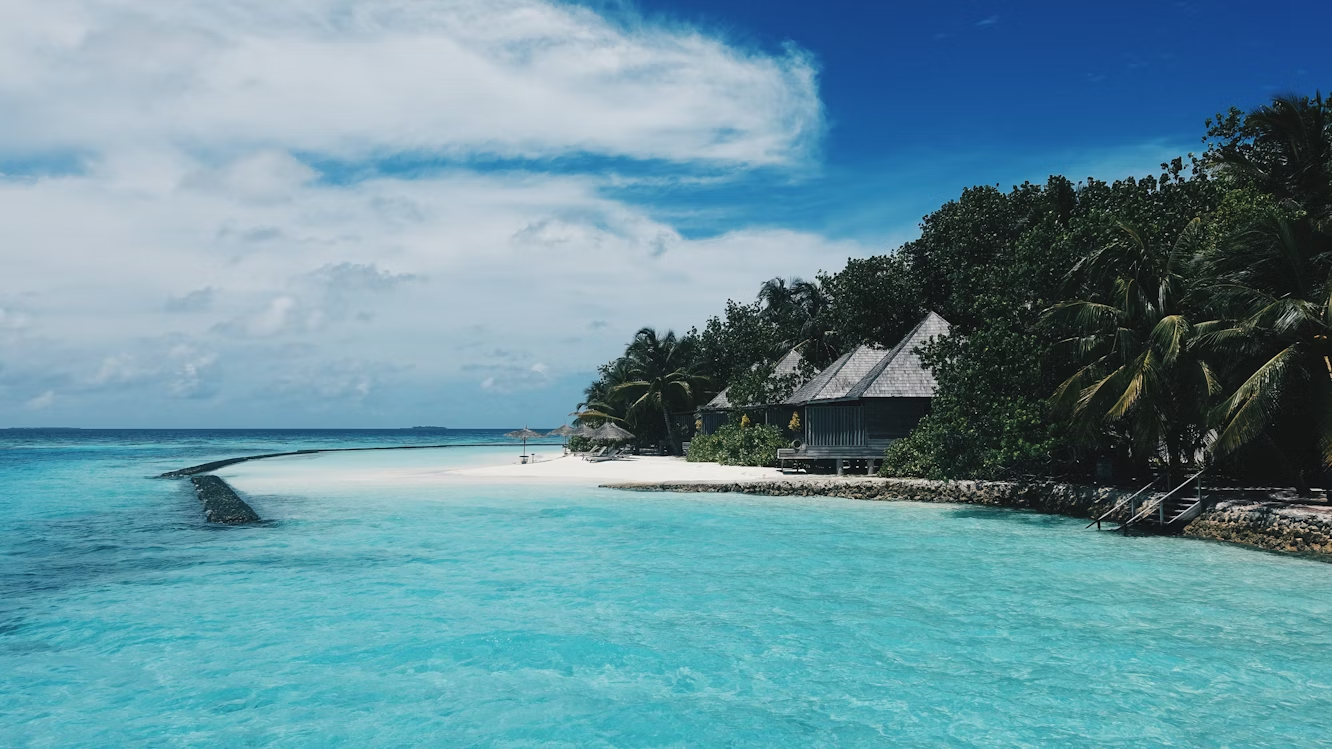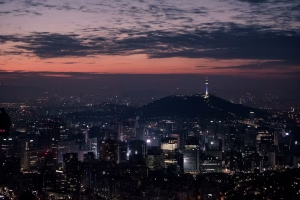The best time to visit Maldives depends on whether you’re dreaming of sun-drenched beach days, vibrant marine life, luxury resort experiences, or budget-friendly travel. From dry, calm winters ideal for diving to off-season monsoons that bring deals and fewer tourists, every month has something unique. Whether you’re honeymooning in a water villa, snorkeling with manta rays, or island-hopping on a budget, timing your trip right can make a big difference in your Maldives experience.
In this guide, we break down the Maldives’ seasons, highlight the best weather months, suggest when to book for fewer crowds, and explain how to make the most of your island escape.
What is the Best Time to Visit Maldives?

The best time to visit the Maldives is from November to April, which marks the dry season (also known as the Northeast Monsoon or “Iruvai”). These months offer clear skies, calm seas, and minimal rainfall, perfect for beach lounging, diving, and sunset cruises. December to March is the beach season in Maldives, ideal for luxury travelers and honeymooners, though prices tend to be higher.
If you prefer lower prices and don’t mind occasional showers, the wet season (May to October), or the Southwest Monsoon (“Hulhangu”), can be a good option. This period brings short, heavy rains, overcast skies, and stronger winds, especially from June to August, but also fewer crowds and discounted resort rates. It’s also the best time to spot manta rays and whale sharks around Hanifaru Bay.
Choose your travel window based on your priorities: sunny skies and underwater clarity for snorkeling, or fewer tourists and deals during monsoon season.
|
Month |
Season |
Temperature Range (°C) |
Chance of Rain |
Month-wise Rating |
|
January |
Winter |
30.0°C – 25.5°C |
10% |
Best |
|
February |
Winter |
31.0°C – 26.0°C |
10% |
Best |
|
March |
Spring |
31.0°C – 27.0°C |
15% |
Best |
|
April |
Spring |
32.0°C – 27.0°C |
20% |
Best |
|
May |
Summer (Monsoon) |
31.0°C – 27.0°C |
60% |
Shoulder |
|
June |
Summer (Monsoon) |
30.0°C – 26.0°C |
75% |
Worst |
|
July |
Summer (Monsoon) |
30.0°C – 26.0°C |
80% |
Worst |
|
August |
Summer (Monsoon) |
30.0°C – 26.0°C |
70% |
Worst |
|
September |
Autumn (Monsoon) |
30.0°C – 26.0°C |
60% |
Shoulder |
|
October |
Autumn (Monsoon) |
30.0°C – 26.0°C |
55% |
Shoulder |
|
November |
Autumn |
30.0°C – 26.0°C |
20% |
Best |
|
December |
Winter |
30.0°C – 26.0°C |
15% |
Best |
Source: Maldives Meteorological Service & Climate-Data.org
Suggested Read: Check Maldives Visa Status In India
Maldives During Different Seasons

The Maldives enjoys a tropical monsoon climate with two main seasons: the dry season (Iruvai) and the wet season (Hulhangu). Unlike Turkey, the Maldives doesn’t experience four traditional seasons, but its year is still rich in variety: from clear-skied luxury escapes to lush, rain-washed adventures perfect for budget travelers. Depending on when you visit, you’ll experience shifting wind patterns, diving conditions, and resort rates.
Winter (December to February)
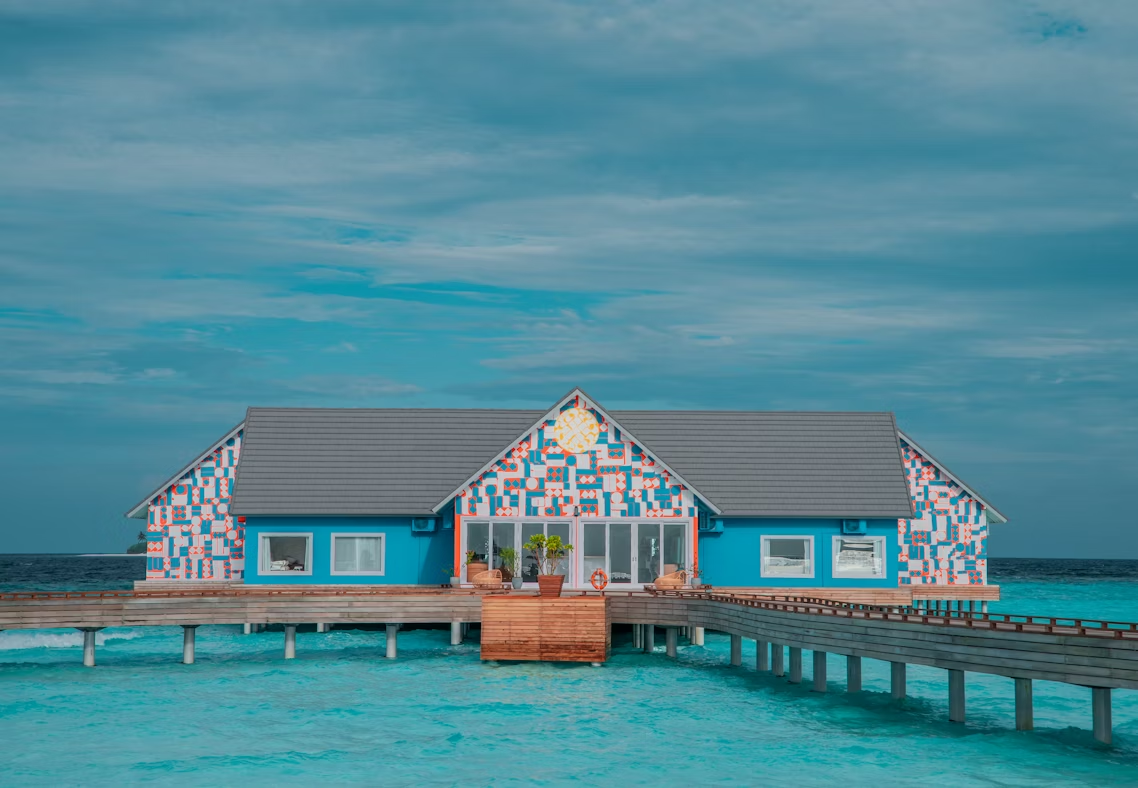
Weather: Winter is the peak tourist season in Maldives, marked by calm seas, clear skies, and minimal rainfall. These months fall under the dry northeast monsoon, locally known as Iruvai. This weather pattern ensures perfect beach conditions, with low humidity and little to no rain. As a result, visibility underwater is excellent, making this the best time for snorkeling, scuba diving, and water sports. The gentle trade winds provide ideal conditions for sailing, and the lack of storm activity means you can enjoy uninterrupted sunshine daily.
Temperature:
- December: 30.0°C high / 26.0°C low
- January: 30.0°C high / 25.5°C low
- February: 31.0°C high / 26.0°C low
Visitor Numbers: High. Tourist numbers surge during this season, especially around Christmas, New Year, and mid-winter school holidays. International flights and resorts book up months in advance, and accommodation prices are at their peak. Many luxury properties require minimum stay durations during the festive period. Expect a more vibrant, lively atmosphere, with numerous events and social gatherings in resorts.
Events and Festivals:
- New Year’s Eve Celebrations: Expect island-wide festivities including fireworks, beachside gala dinners, live DJ performances, and torch-lit buffets. Many resorts create tailor-made celebration packages.
- Maldives National Day (Dates vary, Jan–Feb): Celebrated with parades in Malé, traditional music and dances, and flag-raising ceremonies. It commemorates the country’s liberation from Portuguese rule in the 16th century.
Why You Should Visit Now: This season offers the clearest underwater visibility, calm sea conditions, and reliably sunny days. It’s the perfect time to indulge in luxurious overwater bungalows, candlelit beach dinners, and sunset cruises. Honeymooners will find an ultra-romantic setting, while families enjoy kid-friendly resort activities and safe swimming waters. If you’re seeking the quintessential Maldivian postcard experience, this is the time to go.
Seasonal Dishes & Drinks:
- Mas huni: A hearty traditional breakfast dish made from smoked tuna, grated coconut, onion, and chili, served with flatbread (roshi).
- Fihunu mas: Spicy grilled fish marinated in local herbs, usually enjoyed at open-air resort restaurants with ocean views.
- Fresh coconut water: Often served chilled straight from the husk and sipped beachside; nature’s own hydrating drink.
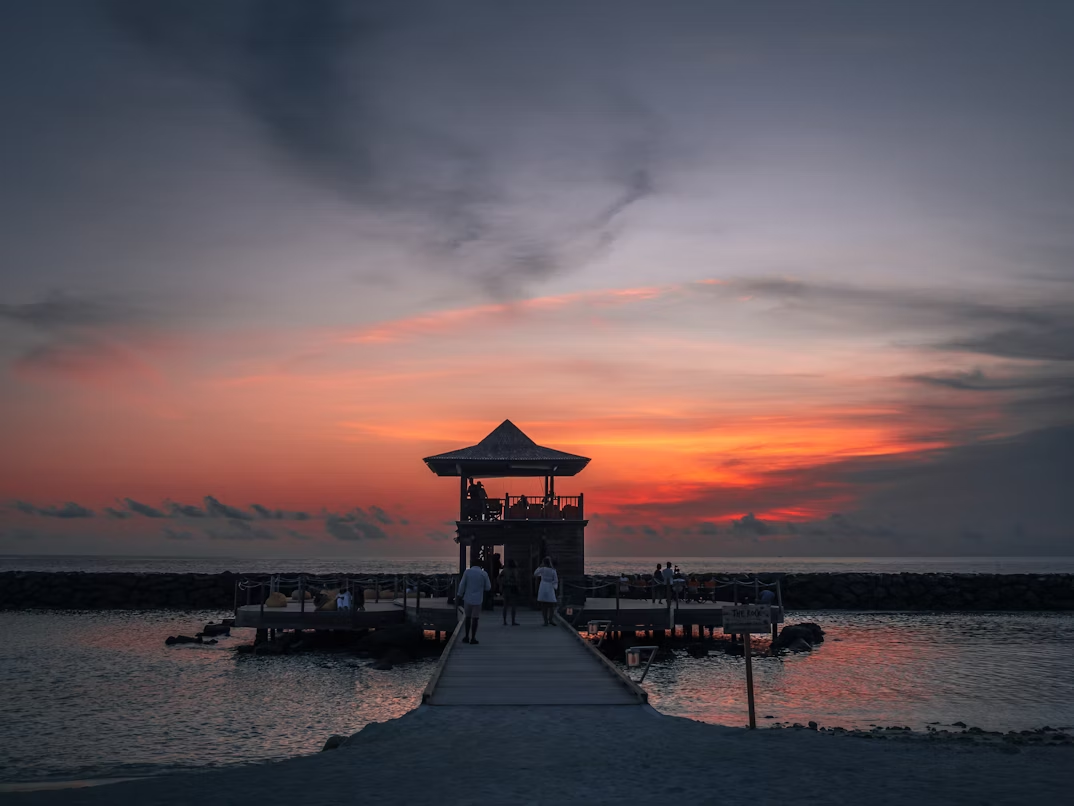
Places to Visit:
- North Malé Atoll: Close to the capital, this region is famous for luxury resorts, vibrant nightlife, and scuba diving excursions.
- South Ari Atoll: One of the best places in the world for spotting whale sharks year-round, with coral reefs offering up to 30-meter visibility.
- Baa Atoll (UNESCO Biosphere Reserve): Although Hanifaru Bay is more active in the wet season, winter still brings secluded beaches, eco-resorts, and snorkeling lagoons.
- Malé City: A great cultural stopover. Visit the Grand Friday Mosque, local fish market, and National Museum to learn about Maldivian heritage.
What to Pack:
- Swimwear, breathable cotton clothing
- Reef-safe sunscreen and polarized sunglasses
- Snorkeling or diving gear (optional; most resorts provide this)
- Waterproof phone pouch or dry bag
- Flip-flops or sandals for beachwear
- Light shawl or cover-up for evenings
Trip Planning Considerations:
- Outdoor Activities: Snorkeling safaris, diving with manta rays, sandbank picnics, sunset cruises, parasailing
- Indoor Options: Overwater spa treatments, wellness yoga sessions, Maldivian cooking classes, cocktail masterclasses
Pro Tips:
- Book 3–6 months in advance, especially for December and January travel.
- Choose resorts with house reefs for the best underwater adventures just steps from your room.
- Travel light: Most islands have a relaxed beach vibe where casual wear is standard.
Ideal for: Honeymooners, luxury travelers, families with kids, marine life enthusiasts, winter sun seekers
Suggested Read: Best Markets in Maldives
Spring (March to April)
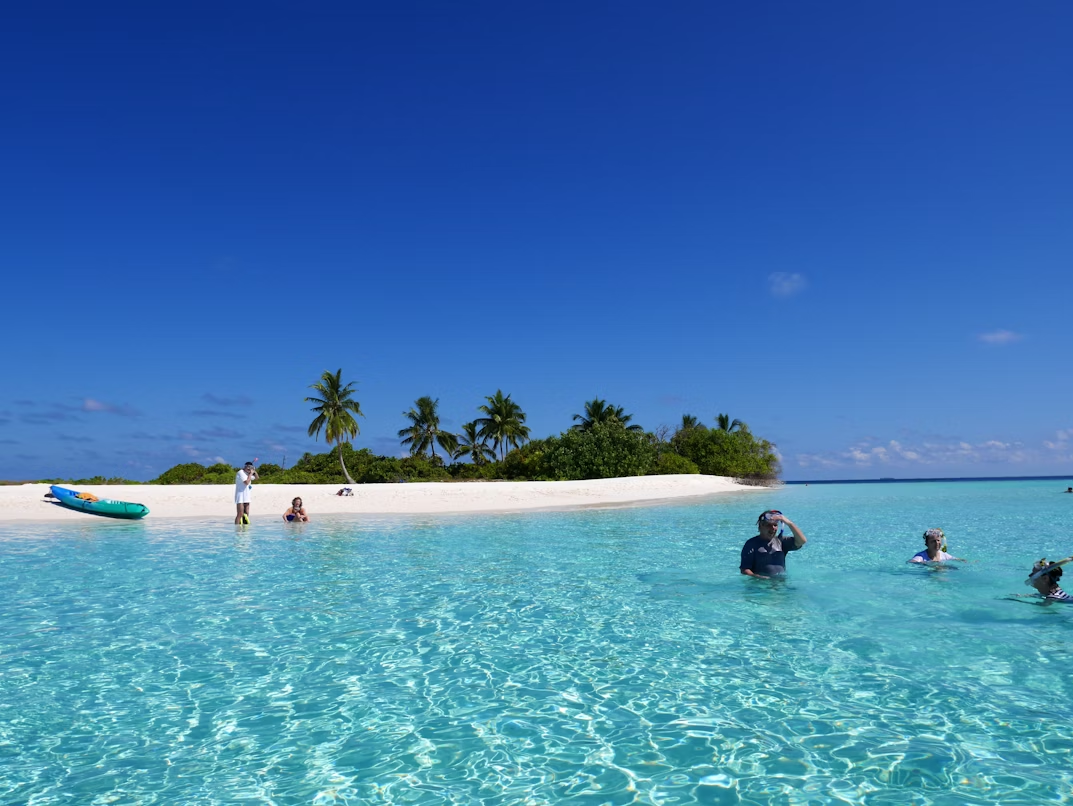
Weather: Spring break in Maldives signals the transition from the dry northeast monsoon (Iruvai) to the wet southwest monsoon (Hulhangu). March retains the sunny, dry climate of winter, offering excellent beach days and ideal conditions for diving and snorkeling. April, while still predominantly sunny, starts to show occasional short rain showers, especially during late afternoons or evenings. Humidity levels begin to rise, but overall, this is still a pleasant time to visit with fewer crowds and favorable marine conditions. Sunsets during this period tend to be extra vibrant, thanks to the shifting cloud cover.
Temperature:
- March: 31.0°C high / 27.0°C low
- April: 32.0°C high / 27.0°C low
Visitor Numbers: Tourist footfall is still relatively high in March, but it begins to taper off in April as the shoulder season approaches. This dip in demand means you can often find better deals on resort stays and flights, especially toward the end of April. Resorts that were fully booked during winter begin to open up, offering a more relaxed and quieter experience.
Events and Festivals:
- Ramadan (dates vary): While the Maldives is a Muslim-majority country, tourism continues uninterrupted at resort islands. However, in local islands and Malé, you may notice reduced service hours, less public consumption of food and drink during daylight, and limited alcohol availability in the capital.
- Eid al-Fitr (end of Ramadan): A major celebration marked by feasting, prayers, and cultural festivities, especially among locals. You may be able to witness or participate in traditional drumming, dancing, and food-sharing events on local islands.
Why You Should Visit Now: Spring in the Maldives gives you the best of both worlds: extended periods of sunshine, excellent underwater visibility for marine adventures, and better travel flexibility than the crowded winter months. Marine life is still abundant, and coral reefs remain vibrant, making this a prime time for divers and snorkelers. With fewer tourists, you’ll also enjoy more privacy at resorts, quieter beaches, and the best time for adventure activities in Maldives.
Seasonal Dishes & Drinks:
- Kulhi Boakibaa: A savory Maldivian fish cake flavored with chili, coconut, and lime, often enjoyed during Eid celebrations.
- Bondibaiy: A traditional sticky-sweet rice dish, cooked with coconut milk and sugar, commonly served during Ramadan and festive occasions.
- Fresh Tropical Fruits: Spring brings an abundance of juicy mangoes, pineapples, bananas, and papayas, perfect for breakfast platters or refreshing smoothies.

Places to Visit:
- Vaavu Atoll: A diver’s paradise, especially known for channel diving and night snorkeling where nurse sharks and reef fish light up under moonlit waters.
- Meemu Atoll: Less commercialized and more tranquil, it features long stretches of untouched beach and great reef diving visibility.
- Dhigurah Island: One of the most scenic local islands, popular with budget friendly travel to Maldives. It has a long sandbank, whale shark sightings, and strong community tourism programs.
What to Pack:
- Breathable summer clothes and a wide-brimmed hat
- Reef shoes for beach walks and snorkeling
- Hydration salts and reef-safe sunscreen
- Light rain jacket or poncho for April showers
- Dry bags for electronics during boat trips
Trip Planning Considerations:
- Outdoor Activities: Channel diving, kayaking through turquoise lagoons, dolphin watching, and sandbank picnics
- Indoor Options: Resort-run cooking classes, Maldivian lacquerware craft demos, and spa treatments
Pro Tips:
- Experience local island culture by visiting Dhiffushi, Maafushi, or Thoddoo, ideal for budget stays and cultural immersion.
- Plan beach dinners or boat cruises around sunset in April, the hues are exceptionally vivid this time of year.
Ideal for: Couples seeking privacy, solo travelers looking for peace, cultural explorers interested in local traditions, and Ramadan observances
Suggested Read: Maldives Visa Rejection for Indian Nationals
Summer (May to August)
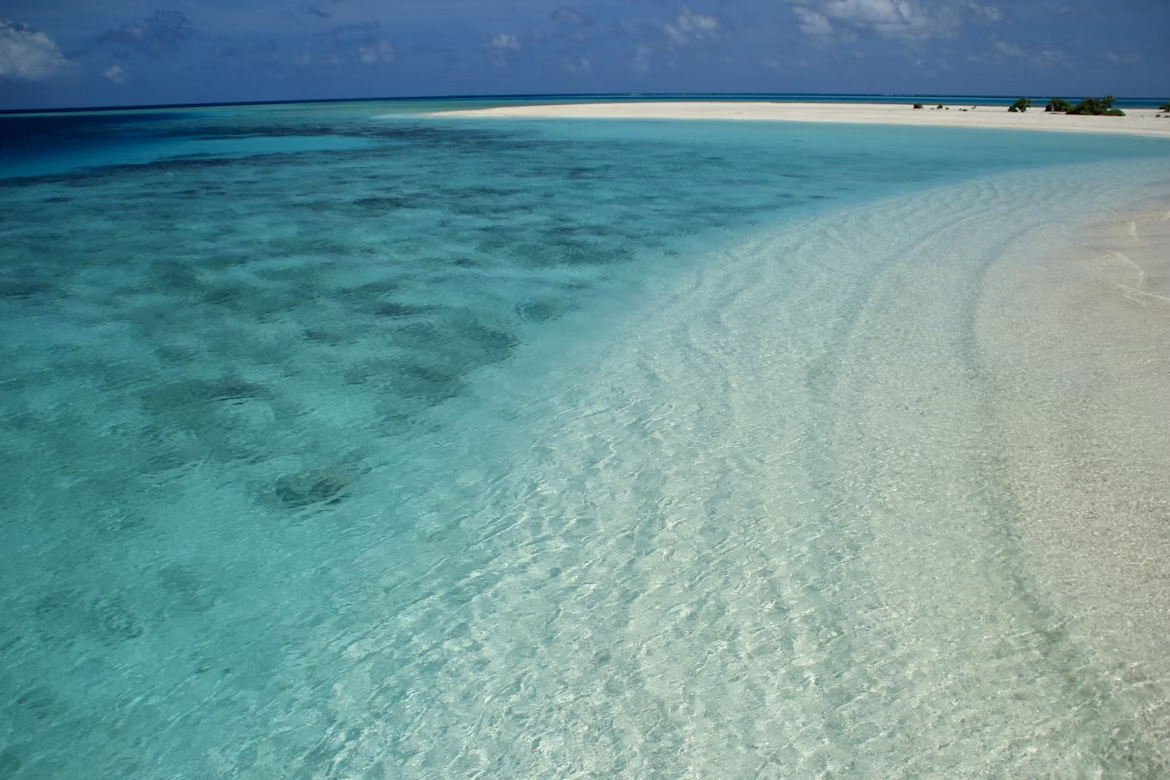
Weather: Summer in the Maldives is governed by the southwest monsoon (Hulhangu), making it the official wet season. Expect frequent but brief rain showers, mostly occurring in the late afternoon or overnight. While skies are often overcast, sunny intervals are common, especially in the mornings. Sea conditions can become rougher, affecting some boat transfers and water activities. That said, the ocean is warm and inviting, and visibility remains decent at many dive sites. The dramatic cloud formations and vibrant sunsets during this season add a moody beauty to the islands, perfect for photography lovers.
Temperature:
- May: 31.0°C high / 27.0°C low
- June: 30.0°C high / 26.0°C low
- July: 30.0°C high / 26.0°C low
- August: 30.0°C high / 26.0°C low
Visitor Numbers: Tourist arrivals drop during the monsoon months, making this the off-peak travel season. As a result, you’ll find significantly lower resort prices, flexible booking options, and more seclusion at beaches and dive spots. This period attracts budget travelers, solo adventurers, long-stay digital nomads, and surfers looking to catch consistent waves in North and Central Atolls. Resorts and guesthouses often promote summer specials with free upgrades or extra nights.
Events and Festivals:
- Maldives Independence Day (July 26): Celebrated across the country with colorful parades, flag-raising ceremonies, and illuminated public buildings. The capital, Malé, hosts the grandest celebrations with music, traditional dances, and military processions.
- Surf Season (May–October): This is peak time for surfing, with regular swells hitting reef breaks in atolls like Thulusdhoo, Himmafushi, and Laamu. Surf camps and guided tours become more active during these months.
Why You Should Visit Now: Despite the rain, summer is the absolute best time for wildlife lovers, especially those looking to spot manta rays and whale sharks. Hanifaru Bay in Baa Atoll becomes a hotspot between June and September, drawing hundreds of manta rays that come to feed in its plankton-rich waters; a bucket-list experience for snorkelers and divers. Fewer crowds mean you can enjoy this marine spectacle with more space and personal attention from guides. Additionally, summer sunsets over the ocean are often layered with dramatic tones due to the monsoon skies.
Seasonal Dishes & Drinks:
- Garudhiya: A delicate, clear tuna soup, typically served with rice, lime, and chili, comforting during cooler, rainy evenings.
- Rihakuru: A rich, fermented tuna paste eaten with rice or flatbread. Strong in flavor, it’s considered a Maldivian staple.
- Coconut Toddy (raa): A mildly fermented drink made from palm sap, traditionally enjoyed fresh in local islands.
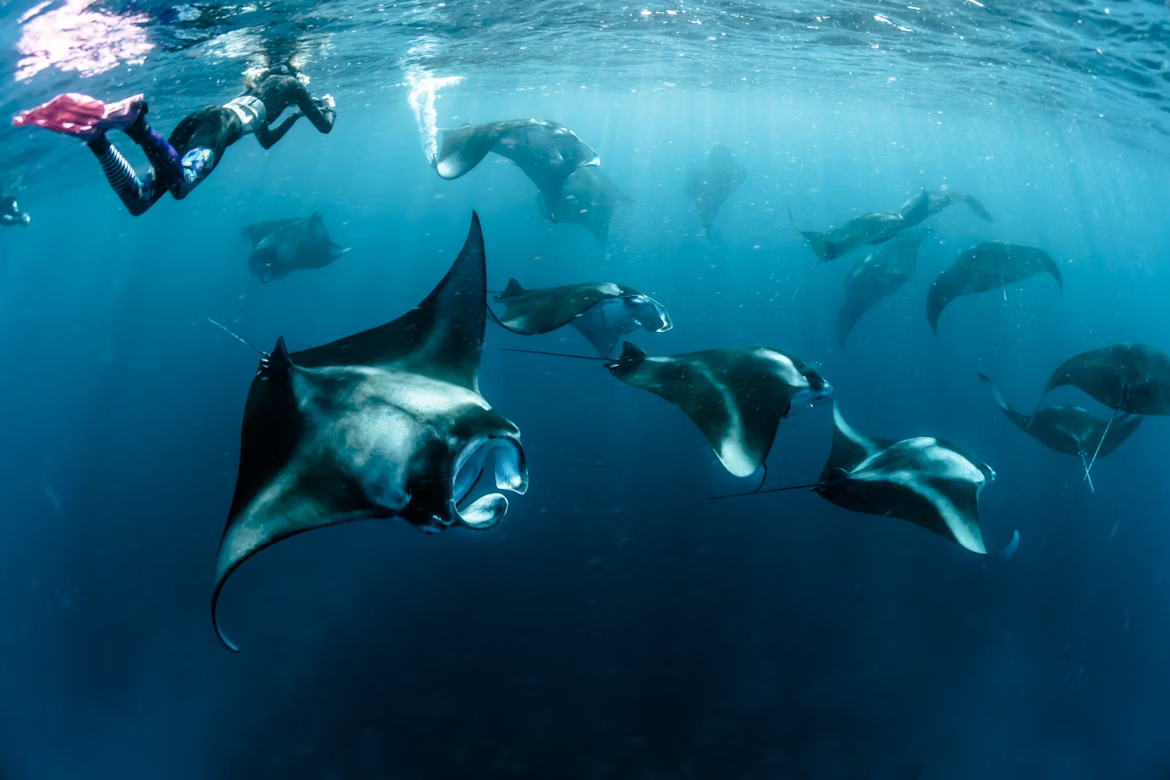
Places to Visit:
- Baa Atoll: A UNESCO Biosphere Reserve, home to Hanifaru Bay, where mass manta feeding and occasional whale shark sightings make this one of the best underwater experiences in the world.
- Thulusdhoo Island: Known as the surf capital of the Maldives, with famous waves like “Cokes” and a thriving backpacker scene.
- Guraidhoo & Gulhi: These charming local islands offer budget stays, friendly dive shops, and laid-back beaches, ideal for immersive and affordable travel.
What to Pack:
- Quick-dry clothing and extra sets of swimwear
- Waterproof daypacks and anti-fog snorkel masks
- Mosquito repellent, reef-safe sunscreen, and sandals
- A light rain poncho or travel umbrella
Trip Planning Considerations:
- Outdoor Activities: Surfing, manta ray snorkeling, fishing trips, diving safaris (best done in the mornings)
- Indoor Options: Spa rituals, cooking classes, indoor yoga, cultural exhibits at resort centers
Pro Tips:
- Review cancellation and refund policies carefully when booking during monsoon season.
- Consider liveaboard dive boats, which offer consistent diving regardless of island weather and let you chase clear waters.
Ideal for: Divers, wildlife photographers, surfers, budget-conscious travelers, and nature enthusiasts seeking once-in-a-lifetime marine encounters
Suggested Read: Maldives Visa Photo Requirements for Indians
Autumn (September to November)
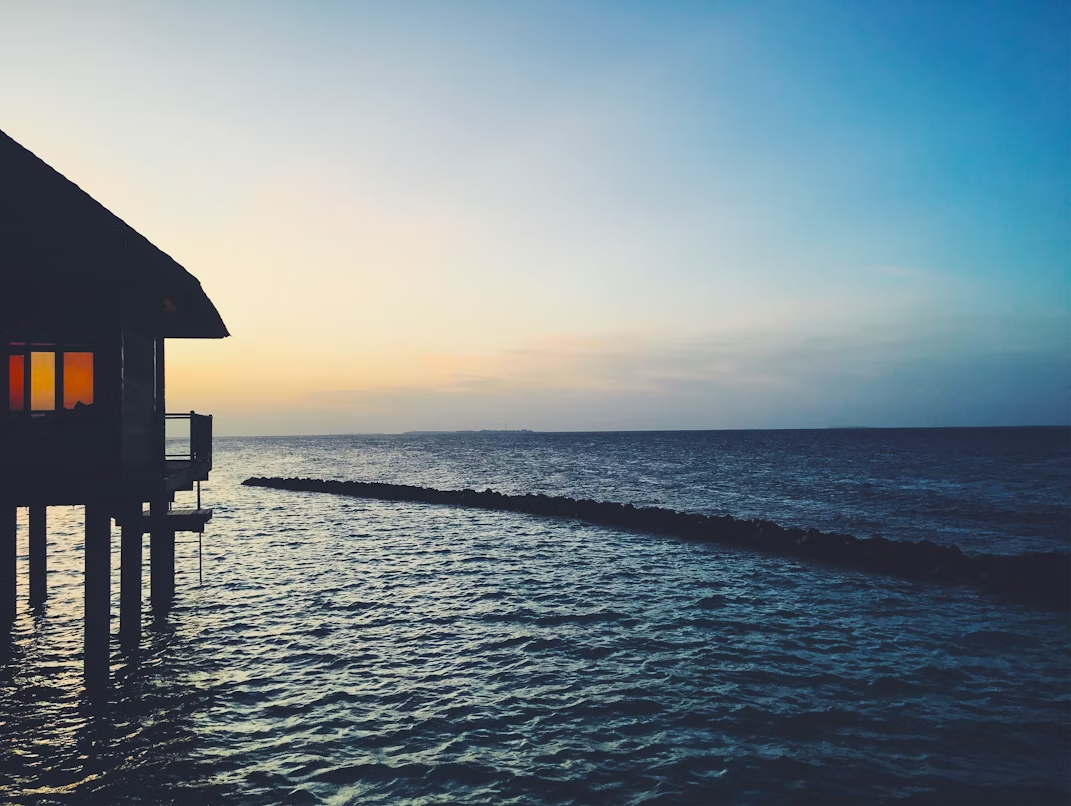
Weather: Autumn in the Maldives is a shoulder season that gracefully transitions from the wet to the dry period. September is often the final chapter of the southwest monsoon (Hulhangu), with scattered rain showers and overcast patches still possible. However, as you move into October and November, skies begin to clear, humidity drops slightly, and sunshine hours increase steadily. November officially marks the start of the dry season (Iruvai), bringing consistently bright days and calmer seas. This period is particularly attractive for travelers looking to avoid the price surge and crowd levels of peak winter but still enjoy good weather conditions.
Temperature:
- September: 30.0°C high / 26.0°C low
- October: 30.0°C high / 26.0°C low
- November: 30.0°C high / 26.0°C low
Visitor Numbers: Visitor numbers remain moderate in September and October, making these the most budget friendly months to visit Maldives. Resorts often run mid-season promotions, offering excellent value for money. November sees a noticeable rise in bookings, especially in the second half, as tourists return in anticipation of the high season. It’s a perfect time for honeymooners or couples looking for fewer crowds and pleasant weather.
Events and Festivals:
- Boduberu Drumming Performances: This traditional Maldivian music and dance is often showcased at resorts during autumn as a way to celebrate the end of the rainy season. Expect rhythmic beats, group dances, and vibrant costumes.
- Eid Milad-un-Nabi: This religious occasion marks the birth of the Prophet Muhammad and is observed across the country, particularly on local islands and in Malé, where mosques host special sermons and prayers.
Why You Should Visit Now: Autumn offers the sweet spot between monsoon unpredictability and winter peak pricing. The seas begin to calm, making this a great time for island-hopping adventures, sunset cruises, and snorkeling trips. Diving visibility improves, and many marine species remain active throughout the summer. It’s also a favorite time for honeymooners or travelers looking for luxury stays without the premium rates. The weather is suitable for both water-based and cultural activities.
Seasonal Dishes & Drinks:
- Bis keemiyaa: A Maldivian version of a spring roll, this deep-fried pastry is filled with tuna, egg, and cabbage, commonly served with afternoon tea.
- Theluli mas: Spicy fried fish served with roshi (flatbread), often accompanied by lime and chili: a favorite local meal after rainy days.
- Fruit Smoothies: With banana, guava, passionfruit, and soursop in peak season, expect fresh, icy beverages that are both delicious and hydrating.

Places to Visit:
- Laamu Atoll: Remote and peaceful, Laamu combines barefoot luxury with lush landscapes and secluded beaches. Ideal for autumn retreats.
- Addu Atoll: Located at the southern tip of the Maldives, it’s rich in heritage sites, including coral mosques and colonial architecture.
- Gan Island: The largest island in Addu, Gan offers a mix of WWII history, post-monsoon greenery, and a local village atmosphere rarely found in the resort islands.
What to Pack:
- Lightweight breathable clothing and a light jacket or shawl for breezy evenings
- Snorkeling gear and an underwater camera for marine adventures
- Bug spray, waterproof footwear, and travel-size rain gear
Trip Planning Considerations:
- Outdoor Activities: Sunset sailing, reef snorkeling, open-air yoga, fishing
- Indoor Options: Museum visits in Malé, spa treatments, local craft workshops, and cultural tours
Pro Tips:
- Travel in early November to catch dry-season weather with lingering off-season prices.
- Island hopping by speedboat is particularly scenic and comfortable in autumn due to calmer seas.
Ideal for: Honeymooners, couples seeking luxury on a budget, slow travelers, cultural explorers, and diving enthusiasts looking for pre-season clarity
Suggested Read: Maldives in January
Shoulder Season in Maldives
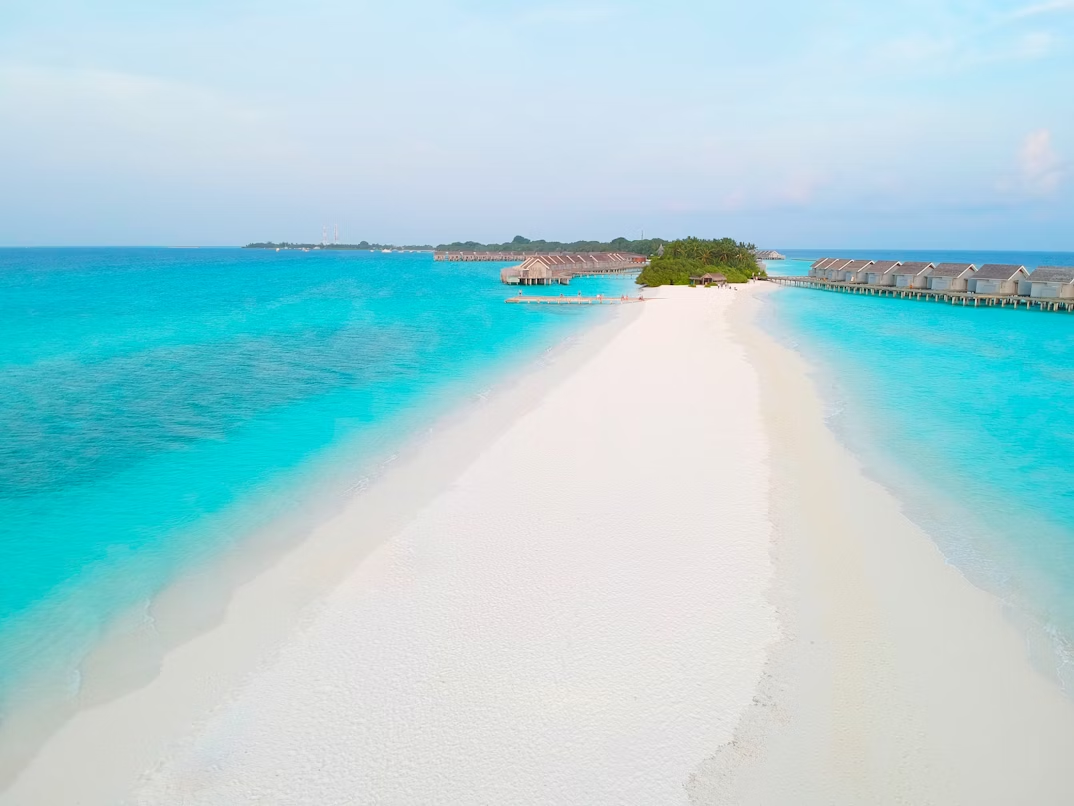
The best shoulder seasons in the Maldives fall between late April to early June and late September to mid-November. These transition periods between the dry and wet seasons offer a wonderful mix of good weather, thinner crowds, and lower prices. While there may be brief tropical showers, many days are still sunny, making it a great time for diving, spa retreats, or romantic beach getaways.
Pros of going to Maldives during the shoulder season:
- Resort prices drop by 20–40% compared to peak winter months
- Water activities like snorkeling and scuba diving are still enjoyable with moderate visibility
- Quieter beaches and less competition for overwater villa bookings
- Better availability at popular resorts, including those with house reefs
- Sunset views are especially vivid after short tropical rains
- Hanifaru Bay opens in late May and peaks during the shoulder months, perfect for manta ray sightings
Cons of going to Maldives during the shoulder season:
- Occasional short rain showers or overcast skies, especially in May and October
- Rougher seas may affect seaplane transfers or boat excursions
- Some local island festivals and events may be limited or rained out
- Higher humidity compared to the dry season
- Fewer marine life sightings compared to peak visibility months (Jan–Mar)
Suggested Read: Nightlife in the Maldives
Cheapest Time to Visit Maldives
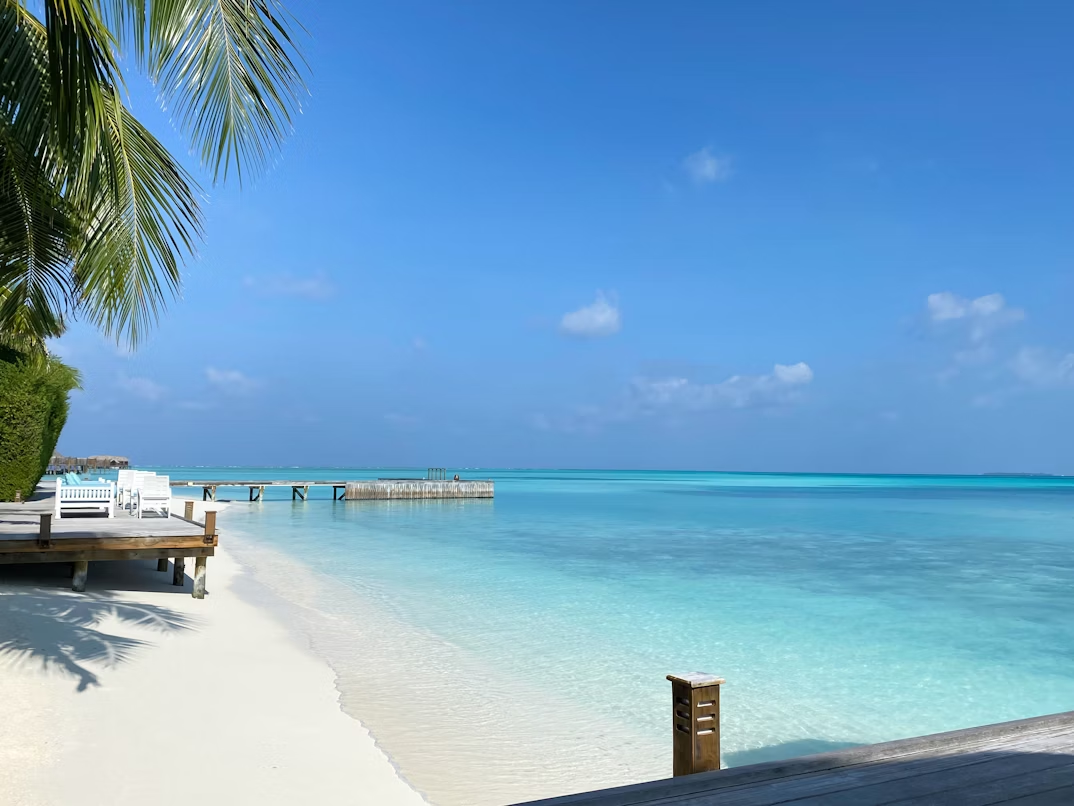
The most budget-friendly time to visit the Maldives is during the low season, especially May through early October. This period aligns with the southwest monsoon, when rainfall and cloud cover are more likely, but that also means huge discounts on luxury stays, cheaper domestic flights, and more flexibility for last-minute travelers. Smart timing can get you overwater villa experiences for a fraction of the price.
Budget Tips:
- Travel during May or September for the best balance of weather and low prices
- Stay on local islands like Maafushi, Thulusdhoo, or Dhigurah for affordable guesthouses and diving
- Look for all-inclusive resort deals in the off season travel to Maldives (often 30–50% off high-season rates)
- Use speedboats instead of seaplanes to reduce transport costs
- Dine at local cafés or guesthouse kitchens for authentic Maldivian food without the luxury markup
- Book dive/snorkel tours directly through local dive shops to save on resort pricing
Suggested Read: Islands in the Maldives You Must Visit
Challenging Seasons for Maldives Travel
While the Maldives is a dreamy destination year-round, certain times of the year come with potential travel challenges, particularly for travelers seeking perfect beach days, smooth inter-island travel, or uninterrupted outdoor activities. The wet season (May to October) and certain religious holidays may require extra planning and flexibility.
Wet Season & Storm Risk (May to October)
The Maldives’ southwest monsoon season brings higher humidity, tropical downpours, and stronger winds, particularly from June to September. While many days still offer sunshine, rain can be frequent and unpredictable, often arriving in short, heavy bursts.
Ramadan and Eid Holidays
As a Muslim country, the Maldives observes Ramadan (month of fasting) and Eid al-Fitr and Eid al-Adha. While resort islands operate normally, services on local islands may be limited during the day. Alcohol is prohibited on non-resort islands year-round and especially restricted during religious periods.
Peak Monsoon Disruptions (July – August)
July and August bring the highest chance of tropical storms, with stronger winds and longer rainy spells. Some activities like island hopping, sandbank picnics, or underwater visibility diving may be affected.
Why You Might Avoid These Periods:
- Rainy skies are limiting sunbathing and photo ops
- Delays or cancellations in boat transfers or seaplanes
- Limited activity offerings on local islands during religious holidays
- Humid weather is affecting comfort for first-time or elderly travelers
Who Should Avoid It:
- Honeymooners or couples seeking guaranteed sunshine and postcard-perfect backdrops
- Photographers and influencers want clear blue skies and ideal underwater visibility
- Families with children or elderly members who prefer calm seas and consistent conditions
- Short-stay travelers with tight itineraries
Suggested Read: Hiking in Maldives


FAQs
1. What is the best time to visit Maldives for photographers?
The best time for photographers to visit the Maldives is from December to April, during the dry season. Expect clear blue skies, vibrant turquoise waters, and golden sunsets, ideal for capturing the islands’ natural beauty. For underwater photographers, February to April offers excellent visibility for reef and marine life shots.
2. When to find the best deals in Maldives
The Maldives’ low season from May to October is ideal for budget travelers. Resort rates can drop by 30–50%, and flights are often cheaper. For the best value, book your trip during May, June, or September when rainfall is moderate, and travel deals are abundant.
3. When to visit Maldives for fewer crowds?
To enjoy the Maldives with fewer crowds, plan your trip during the shoulder seasons: late April to early June or late September to mid-November. These periods offer a peaceful experience, lower rates, and good weather, especially for couples or solo travelers seeking tranquility.
4. What are the cultural highlights in Maldives by season?
- Ramadan & Eid (dates vary): Experience local customs, community feasts, and mosque prayers, especially on inhabited islands.
- Independence Day (July 26): Expect flag displays, school parades, and performances.
- Fishermen’s Day (December 10): Celebrated in coastal villages with boat races and fresh seafood meals.
- Bodu Beru (traditional drumming) is showcased year-round at resorts and during local festivals.
5. Is it worth visiting Maldives during the rainy season?
Yes, if you don’t mind a few showers. From May to October, rain comes in short bursts and is often followed by sunshine. You’ll enjoy cheaper resorts, fewer tourists, and lush green scenery. Water activities like diving and snorkeling are still possible, especially in calmer regions like Ari Atoll.
6. What is the driest month in the Maldives?
February is the driest month in the Maldives, with the least rainfall, low humidity, and near-constant sunshine. It’s perfect for beach holidays, weddings, and water sports. It’s also peak tourist season, so early bookings are advised.
7. When is the best time for diving and snorkeling in the Maldives?
For the best underwater visibility and marine encounters, visit from January to April. Manta rays and whale sharks are easiest to spot during this time, especially in Baa Atoll and Ari Atoll. For the unique feeding behavior of mantas, June to November in Hanifaru Bay is ideal.
8. Is the Maldives good to visit year-round?
Yes, the Maldives is a year-round destination. Each season offers something unique: sun-drenched beaches in winter, lush seascapes in monsoon, and great discounts in the off-season. Whether you’re seeking romance, diving adventures, or local culture, every season is truly the best time to visit Maldives.





